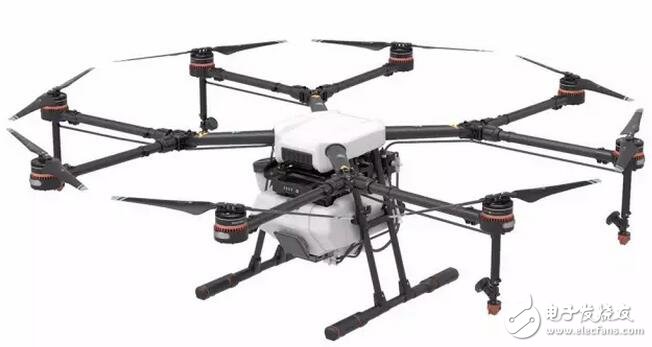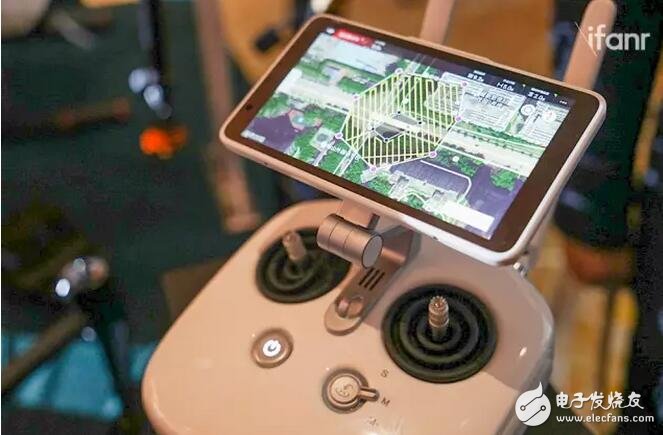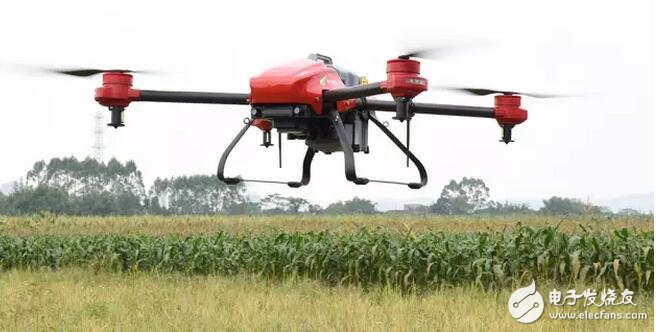On November 24th, a high-yielding Dajiang released a new aircraft, but this time their battlefield was transferred to farmland. MG-1S plant protection drone: optimization improvement rather than substantial upgrade is different from outside rumors. This is only the upgrade of MG-1S, MG-1S of the first generation of agricultural plant protection drone MG-1. There are seven major upgrades:
1. The flight control system is updated to A3 flight control, built-in dual barometer and dual compass redundant system, optimized for plant protection operations to ensure flight stability during load;
2. High-precision millimeter-wave radar is set on the front side, rear side and bottom of the aircraft. The front and rear squint radar is responsible for detecting the terrain, and the down-view radar is fine-determined and can fly according to the precise relative height without external intervention. ;
3. Two new custom pumps can be added to control the front and rear nozzles separately, providing three operation modes: front single spray, single single spray and full spray;

4. Provided a centimeter-level handheld RTK system for customers to purchase, and added a charging housekeeper, portable fog analyzer and other accessories that can connect 6 smart batteries at the same time;
5. The remote control is equipped with a 5.5-inch 1080P display and built-in GPS. The flying hand can set the waypoints, plan the working area, and identify obstacles through the remote control. The battery life is 5 hours.
6. Optimization of mechanical structure of the arm, tripod, water tank and water pump;
7. Smart battery is self-balancing, equipped with high-strength surface protection shell and shock absorbing device. The output wire is also enhanced and the airborne life is kept for 24 minutes.
Compared to the MG-1, the MG-1S is more like a complement to some of the accessories that were lacking in the previous generation and optimized the design. As for why computer vision functions have not been added to the plant protection machine to achieve outstanding results in the aerial photography field, DJI said that due to the complex environment of farmland, the visual obstacle avoidance technology can not realize our vision for the time being. After the technology is more adaptable to the agricultural environment, we will consider putting it into use.

Dajiang's plant protection machine does not have computer vision, and another mature competitor, Feifei Technology, took the lead in adding a "Tianmu" UAV vision system to its P20 2017 plant protection drone a few days ago. The ultra-flying "Tianmu" has two visual modules for obstacle avoidance and terrain. Binocular obstacle avoidance can provide 30m effective obstacle avoidance range, and also has near-infrared illumination technology to avoid obstacles even at night; the terrain vision module is similar to the millimeter wave radar system of DJI, allowing the drone to accurately perceive the terrain. Considering that the flight environment of plant protection work is relatively harsh, the flying "Tianmu" also has air curtain blocking technology to block foreign matter such as dust and pesticide droplets from entering the lens.

After talking about the competitors, we returned to Dajiang. In addition to hardware upgrades, Dajiang also launched the Dajiang Agricultural Management Platform for the first time in conjunction with the release of MG-1S. Users can view the status of the aircraft in real time on the platform, query the progress of each aircraft, manage the aircraft and operations teams, query the planned fields, and assign assignments. Intelligent planning documents can also be shared through this platform to improve operational efficiency and reduce the intensity of flying hands.
The retail price of MG-1S in mainland China is RMB 42,000. The reservation will be accepted from now on and will be shipped in the first quarter of 2017. The MG-1S will also be given a 300,000 yuan third party liability insurance and 3888 yuan users. In the care plan, users can get a maintenance quota of RMB 40,000 and a quota of spare machine applications within one year.
LED display screens, also known as LED video walls or LED panels, are flat panel displays that use light-emitting diodes (LEDs) to display images, videos, and other content. These screens are made up of individual LED modules that work together to create a larger display.
There are hot-selling models such as P2.5/P2.6/P3.91/P4.81/P5/P10 Pantalla led panels indoor outdoor use.
LED display screens are commonly used in various applications, including advertising and marketing, sports stadiums, concerts and events, retail stores, control rooms, and transportation systems. They are known for their vibrant colors, high resolution, and ability to capture the attention of viewers.Led Screen,Led Display,Led Video Wall,Led Display Board
Guangzhou Cheng Wen Photoelectric Technology Co., Ltd. , https://www.pantallaledcw.com
